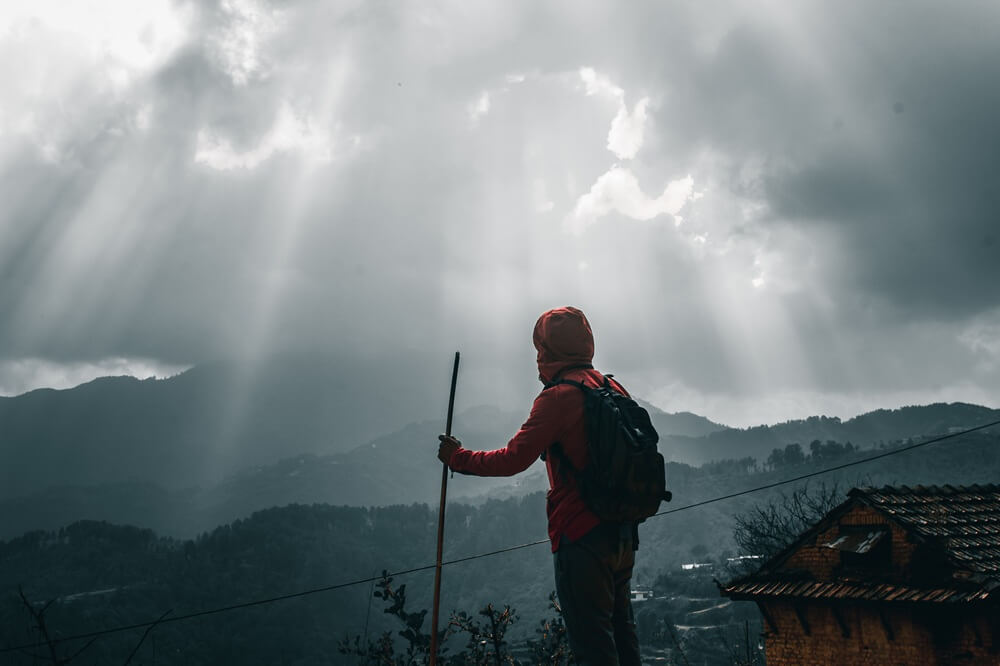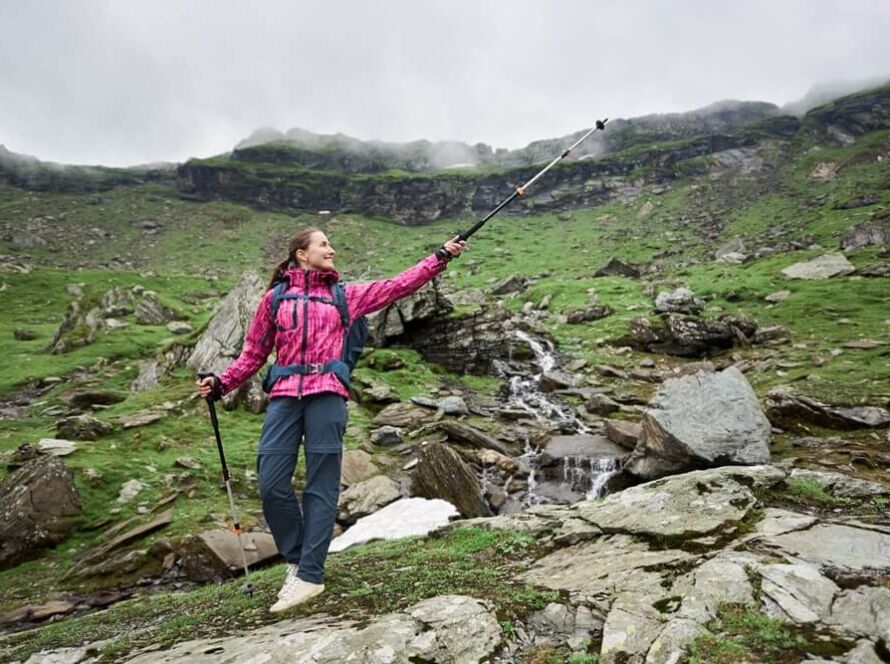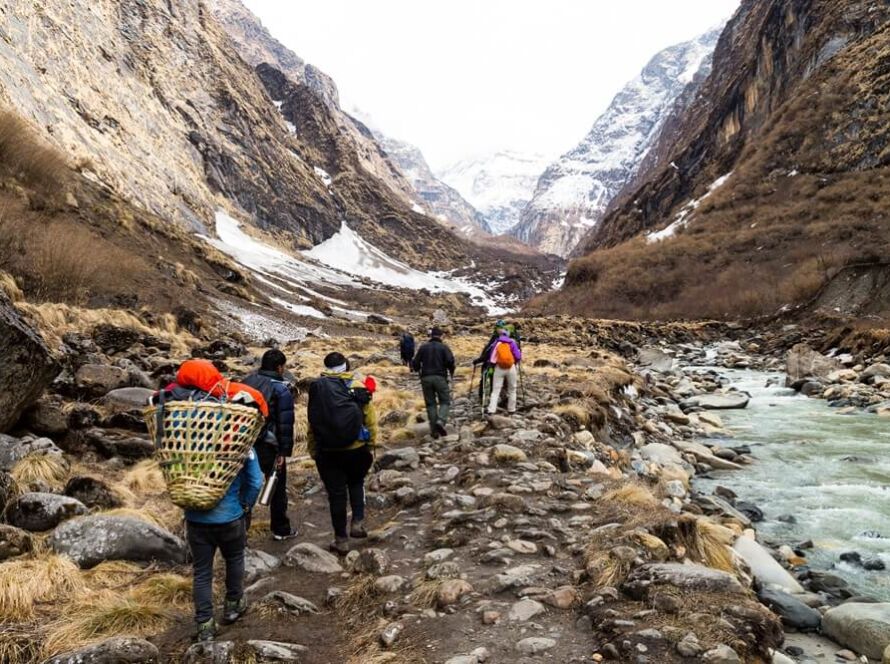Monsoon trekking in India can be an unforgettable experience — lush green landscapes, mist-covered peaks, and the rhythmic sound of rain creating a magical atmosphere. However, trekking during the rainy season also comes with challenges like slippery trails, unpredictable weather, and swollen rivers. This monsoon trekking guide will help you prepare for a safe and enjoyable adventure with practical safety tips, gear recommendations, and expert advice.
Why Monsoon Trekking is Unique
Monsoon treks offer a completely different perspective of the mountains and forests. Trails come alive with fresh greenery, waterfalls are at their peak, and the air feels crisp and refreshing. Popular monsoon treks in India include:
- Valley of Flowers Trek, Uttarakhand – Known for blooming wildflowers during July–August
- Hampta Pass Trek, Himachal Pradesh – Scenic landscapes with rain-fed streams
- Sinhagad Fort Trek, Maharashtra – Short but thrilling in the monsoon
- Tadiandamol Trek, Karnataka – Lush hills and misty views
These treks require extra preparation to handle rain, mud, and rapidly changing conditions.
Essential Safety Tips for Monsoon Trekking
1. Pre-Trek Preparation
Check multiple weather sources before heading out. Avoid trekking alone—opt for groups or certified guides. Keep your family informed of your location. This how to trek safely in rainy season approach minimizes your chances of being caught off-guard.
2. On-Trail Precautions
Never cross swollen streams without safety ropes or guidance. Stay alert for loose rocks on landslide-prone paths. Take frequent breaks under shelters to prevent exhaustion. These measures are vital for avoiding risks in monsoon treks.
3. Emergency Response
Carry a fully charged phone with power banks, save local rescue contacts, and know the nearest evacuation routes. Quick decision-making in emergencies can be life-saving. Following a rainy season trekking guide can prepare you for such scenarios.
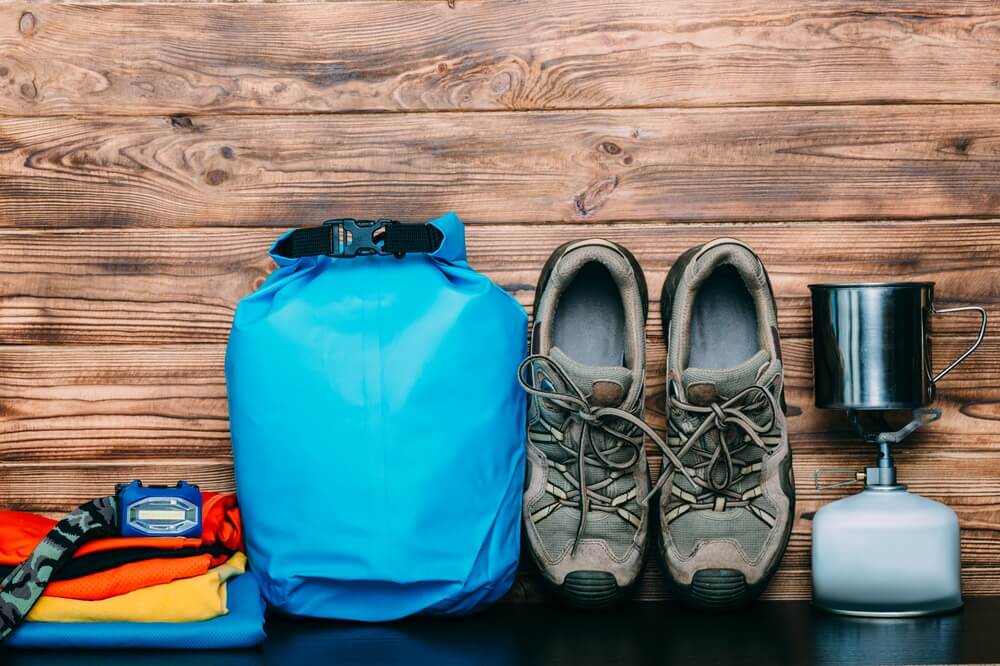
Post-Trek Recovery and Care
After your trek, dry all gear immediately to prevent damage. Rehydrate with warm fluids and eat nutrient-rich meals to replenish energy. Check yourself for leech bites or blisters, treating them promptly. Documenting your trek in a journal not only keeps memories alive but also helps refine your future monsoon trekking in India guide experiences.
Monsoon Trekking Gear Checklist
Packing the right gear is crucial for safety and comfort during rainy treks. Here’s what you must carry:
- Waterproof Backpack – Keeps gear dry in heavy rain
- Rain Poncho / Rain Jacket – Essential to stay dry and prevent hypothermia
- Trekking Poles – Helps maintain balance on slippery trails
- Waterproof Trekking Shoes – Provides grip on wet terrain
- Dry Bags – Store electronics, documents, and clothes
- Quick-Dry Clothing – Avoid cotton; opt for synthetic or merino wool
- Headlamp with Extra Batteries – In case visibility drops
- First Aid Kit – Include antiseptic, blister care, and basic medicines
- Water Purification Tablets – To ensure safe drinking water
Best Practices for Monsoon Trekkers
- Stay Hydrated – You might not feel thirsty in cool, wet weather but dehydration can still occur.
- Watch for Leeches – In some regions, leeches are common during monsoon; carry salt or tobacco powder to remove them.
- Cross Rivers Safely – Avoid strong currents and only cross shallow points under guidance.
- Layer Your Clothing – Helps regulate body temperature in changing weather.
- Follow Leave No Trace Principles – Keep the trekking route clean and avoid disturbing wildlife.
Best Monsoon Treks in India for 2025
If you’re planning your trek this year, consider these top-rated monsoon trekking destinations:
- Valley of Flowers, Uttarakhand – July to August
- Hampta Pass, Himachal Pradesh – June to September
- Brahmatal Trek, Uttarakhand – Offers lush forests and high-altitude lakes
- Kudremukh Trek, Karnataka – Rolling green hills and cloud-covered trails
- Rajmachi Fort Trek, Maharashtra – Historic fort surrounded by waterfalls
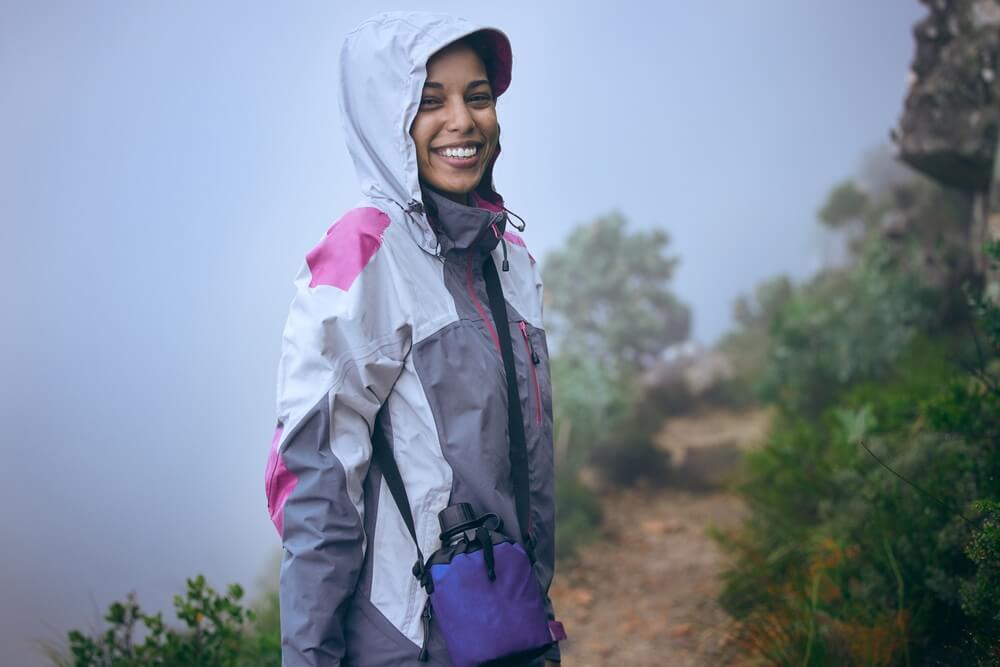
FAQ’s For Monsoon Trekking
1. Is trekking safe during the monsoon season?
Yes, monsoon trekking can be safe if you choose the right trails, check weather forecasts, and carry proper gear. Avoid landslide-prone areas and follow local guides’ advice.
2. What are the best places for monsoon trekking in India?
Popular monsoon trekking destinations in India include Valley of Flowers (Uttarakhand), Hampta Pass (Himachal Pradesh), Rajmachi Fort (Maharashtra), and Kudremukh (Karnataka).
3. What should I pack for a monsoon trek?
Essential items for monsoon trekking include a waterproof backpack, raincoat or poncho, quick-dry clothing, sturdy trekking shoes with good grip, insect repellent, and waterproof covers for electronics.
4. How do I protect my gear during a monsoon trek?
Use dry bags and zip-lock pouches to keep essentials like phones, cameras, and clothes safe from rain. A waterproof backpack cover is also recommended.
5. What are the challenges of trekking in the monsoon?
Common challenges include slippery trails, leeches, sudden weather changes, and limited visibility. Preparing in advance and carrying the right gear helps manage these issues.
6. Are there any health precautions for monsoon trekking?
Yes, carry a first aid kit, stay hydrated, and wear insect-repellent cream to prevent bites. Also, avoid drinking water directly from streams without purification.
7. Which type of shoes are best for monsoon trekking?
Opt for high-ankle, non-slip trekking shoes with water resistance and a strong grip to navigate wet and slippery terrain safely.
8. Can beginners go for monsoon trekking?
Yes, beginners can enjoy monsoon treks if they start with easy-to-moderate trails, trek in groups, and follow all safety guidelines.
9. How do I stay dry during a monsoon trek?
Wear quick-dry clothes, layer smartly, and use a good-quality rain jacket or poncho. Keep spare dry clothes in waterproof bags.
10. When is the best time for monsoon trekking?
The best months for monsoon trekking in India are July to September, but it depends on the region and weather patterns.
Final Thoughts
Monsoon trekking can be magical, but preparation is key. From waterproof gear to safety planning, every detail matters when hiking in wet conditions. With the right precautions, you can enjoy the beauty of rain-soaked landscapes without compromising your safety.
Pro Tip: Always inform someone about your trekking plan, expected return time, and route before you start.

